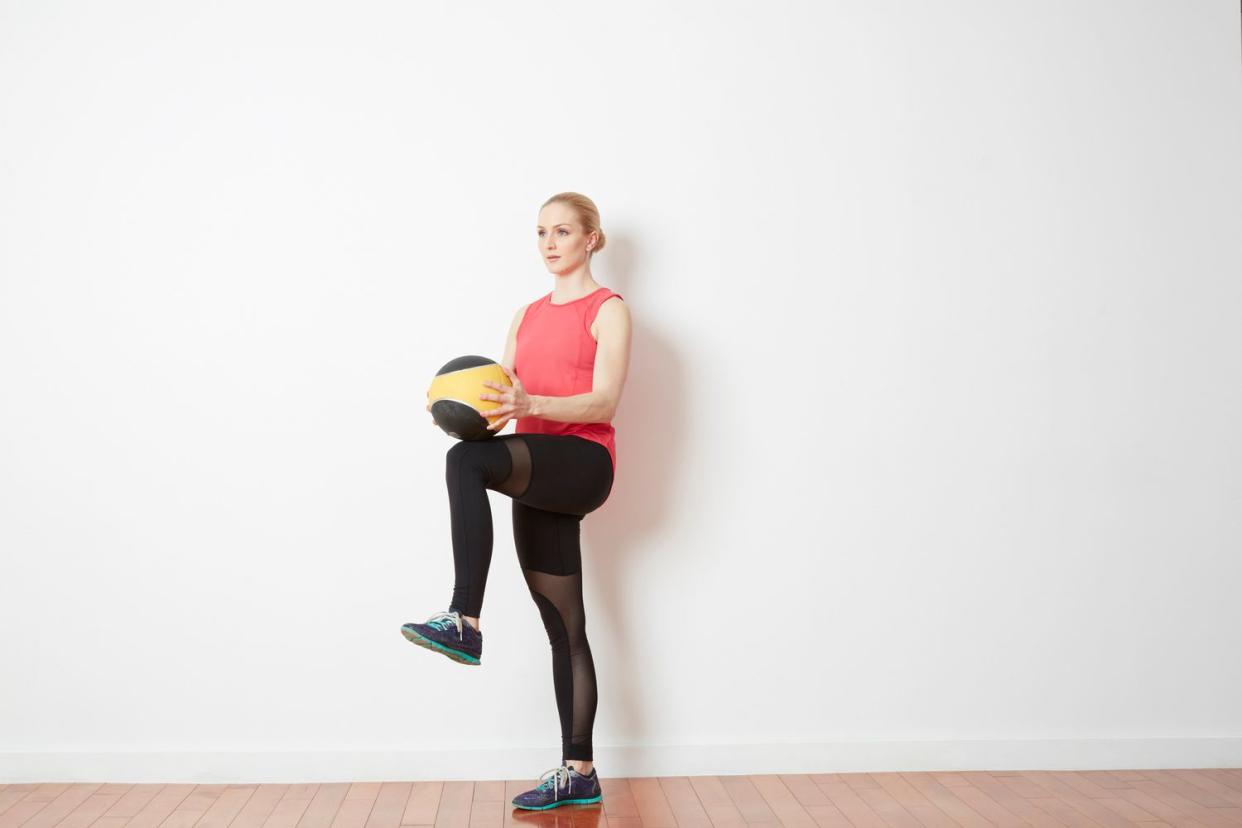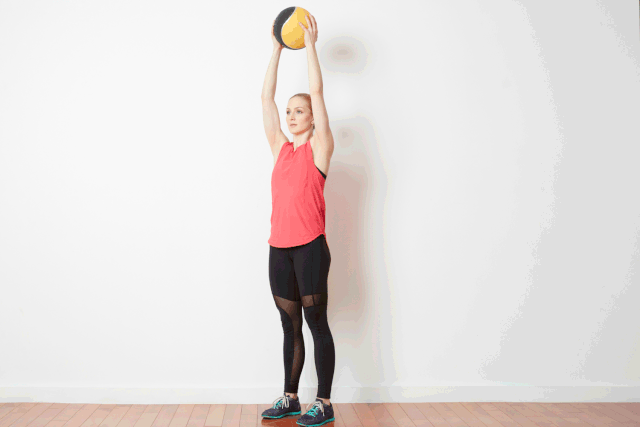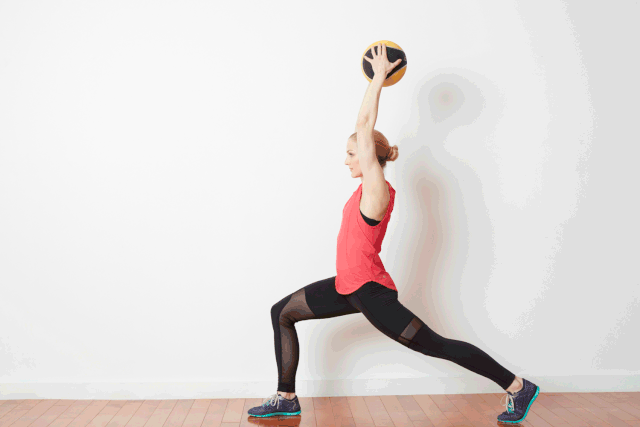Best Cardio Workouts and Exercises for Bad Knees

Verywell / Ben Goldstein
Reviewed by Tara Laferrara, CPT
If you experience knee pain or have a knee condition, there are still plenty of exercises that are safe for you to do, including non-weight-bearing exercises, low-impact exercises, as well as moves that are easy on the joints.
In addition to improving overall fitness, performing cardio and strengthening exercises may lead to other significant benefits, such as a reduction in anxiety symptoms, decreased blood pressure, increased quality of sleep, as well as a reduced risk of serious conditions, like heart disease and certain cancers. Regularly exercising also helps improve heart and lung health.
Because knee pain can be caused by various conditions, like arthritis, a sprain, or an overuse injury, it's important to speak with your healthcare provider prior to beginning a new exercise program.
Your healthcare provider can tell you which exercises are okay for you to perform. They may also recommend physical therapy and/or prescribe you medication depending on your diagnosis.
Related:The 10 Best Knee Support Products of 2023
The Best Gym-Based Cardio Exercises for Bad Knees
Cardio exercise is a great place to start in your workout routine and one of the best choices for strengthening the lower body, getting your heart rate up, and increasing endurance.
If you have access to a gym, the pool and several machines, like the treadmill, ergometer, and rowing machine, can help provide a great knee-friendly cardio workout.
If any exercise worsens your knee pain, be sure to stop and speak with your healthcare provider or physical therapist. They can inform you if it's okay to continue.
Related:Why 'No Pain, No Gain' Is Bad Advice
Knee-Friendly Swimming Exercises
Swimming is one of the best exercise choices if you have knee pain, as the water keeps your body buoyant, taking the impact off of your knees. This allows you to get a great cardio workout and strengthen the muscles that support the knees.
The best knee-friendly moves are freestyle and the backstroke, but you can also try other drills and exercises.
Reverse kicking: Wrap your arms around a kickboard, flip over onto your back and kick, bringing the knees high with each kick. It's almost like you're marching.
Walking: Wear a flotation device and walk across the pool. The resistance will get your heart rate up, but there's little joint impact. You can walk forward, backward, and sideways to strengthen the muscles in the lower body.
Water aerobics: Group exercise is fun and doing movements in the pool will give you a great cardio workout with minimal impact on the joints.
To increase the intensity, perform your chosen swimming exercise for a longer period of time and/or try to move more quickly through the water, while still maintaining proper form.
Related:Swimming Workouts That Build Strength
Upper Body Ergometer
An upper body ergometer is like a bicycle for your arms, and many gyms and physical therapy clinics have them. This machine puts no pressure on the knees, making it a good choice if you have a severe injury or you're recovering from surgery.
You sit in front of the machine and cycle the pedals with your hands to get your heart rate up.
Interval training: Warm up with a low speed and low intensity for 5-10 minutes, then increase the speed and intensity for 30-60 seconds. Reduce the speed and intensity for 5 minutes, then repeat.
Steady-state cardio: Pick an intensity level that feels comfortable to maintain and perform the exercise for 30-60 minutes. This is a great exercise to do if you are a beginner.
Time trials: Set a distance, intensity level, and speed. Track the time it takes you to complete the exercise. Over time, as you build endurance and strength, you will be able to complete the same distance at a higher intensity level and speed.
Treadmill
The treadmill is a good choice if you can walk without pain. The moving belt provides a cushion that concrete sidewalks don't, allowing you to walk without striking such a hard surface. Make sure you are wearing proper shoes that provide support.
To increase the intensity, try speed walking or walking on an incline. Alternate walking at a slow pace or low incline for 2 minutes, with walking at an increased speed and/or incline for up to 5 minutes. Repeat for up to 30 minutes and finish with a cooldown.
Related:12 Tips for Walking When You Have Sensitive Knees
The Rowing Machine
The rowing machine is another option to try because the movement works the quads and hamstrings, helping to build strong knees. If you're:
A beginner exerciser: Try doing this machine at a moderate intensity for about 10 minutes. You can increase the time and intensity each week to build endurance and strength.
An advanced exerciser: Begin with a warm-up and alternate rowing for 300 meters at a moderate pace with slowing down for two minutes. Repeat for 3 sets and do a cool down.
Because the movement is repetitive on the knees, this may help your knee pain or, for some, it may make it worse. Start easy and only do it for a few minutes to see how your body responds. If all that bending hurts, this is one to skip.
Home Cardio Workout for Individuals With Knee Pain
If you don't belong to a gym or those options don't work for you, there are plenty of exercises you can do at home with just a few pieces of equipment.
The workout below includes a variety of low-impact cardio exercises designed to get your heart rate up without placing intense pressure on the knees and other joints.
Precautions: See your healthcare provider before doing this or any other workout and skip any moves that cause pain or discomfort.
Equipment: A resistance band, a medicine ball (4–10 pounds), and an exercise ball
Workout Instructions
Warm-up with light cardio, marching in place or around the house for at least 5 minutes, or use the first couple of exercises to warm up your muscles.
Once you're warmed up, stretch any tight muscles of the lower body; the hamstrings, quads, and calves.
Do each exercise for 30–60 seconds, going from one move to the next with little or no rest in between.
Aim for working at a moderate intensity. If you want to add more intensity, go faster, use a bigger range of motion for the exercises, add impact, or use a heavier resistance.
Do one circuit for a short, 15-minute workout or repeat the circuit as many times as you like.
End with a cool down and be sure to stretch the lower body.
To decrease the intensity of the workout, take longer breaks, perform the moves slower, use less resistance, and decrease the amount of repetitions.
Related:Stretching Exercises for Tight Leg Muscles
Step Touches
The workout starts with simple exercises that get progressively more intense. For your first move, start with step touches.
Step out to the right taking the arms out to the sides.
Bring the left foot in, touching the floor next to the right foot, and immediately step to the left with the left leg.
Keep legs relatively straight; this is not a side lunge or squat.
Continue to step to the right and left, making the steps wider and the arms bigger to warm up the body.
Repeat for 60 seconds. To decrease intensity, repeat for 30 seconds.
Variations
Step touch all the way across the room and back.
Circle the arms overhead to add intensity.
Instead of step touches, stay on the right leg and step the left foot out and in for 30 seconds. Repeat on the other side.
Low-Impact Jumping Jacks
Increase the intensity just a bit with low impact jumping jacks.
Take the right foot out to the right, pivoting slightly on the left foot so that your body is facing the left side of the room. At the same time, swing the right arm up.
Step back to start and pivot to the right, taking the left leg out and swinging the left arm up.
Continue alternating sides for 60 seconds, or for 20-30 seconds to decrease the intensity.
Variations
Add circle arms. Instead of taking one arm up at a time, take both arms up, circling them together like you're drawing a rainbow in the air.
Add impact. If it doesn't bother your knees, try a full jumping jack.
If pivoting bothers your knees, keep your body facing forward.
March With an Exercise Ball
Grab your exercise ball and hold the ball in both hands straight up overhead.
Bring the right knee up as you bring the ball down to the knee.
Take the ball up, lower the right leg, and do the move on the left leg.
Continue for 60 seconds. To decrease the intensity, perform this exercise for 20-30 seconds.
Variations
Keep the ball at chest level as you march if the exercise is challenging for the upper body.
Speed up the exercise to add intensity.
Perform the move without an exercise ball to decrease the intensity.
Around the World With an Exercise Ball
Continue using the exercise ball for this "around the world" exercise.
Begin by holding your exercise ball in both hands.
With your feet out and knees slightly bent, swing it out to the right.
Swing it overhead and circle over to the left.
Continue circling the ball all the way back to the middle, repeating for 30 seconds in one direction and 30 seconds in the other direction. To decrease the intensity, perform this move for 15 seconds in one direction before switching directions.
Variations
Make the move as big as possible to add intensity.
To make it easier, hold the ball closer to the body as you circle the ball around.
To decrease intensity, perform the move without the ball.
Medicine Ball Knee Lifts

Verywell / Ben Goldstein
For some variety, it's great to add a new tool to the mix. Grab your medicine ball. Around 4 to 8 pounds is a good range.
Hold it in both hands and march, like you did with the exercise ball.
Start with the medicine ball straight up and bring the right knee up, touching it with the medicine ball.
Lower and repeat with the left knee, alternating sides for 60 seconds. To decrease intensity, perform this move for 30 seconds.
Variations
If this feels too difficult for the upper body, keep the ball at chest level as you march.
Speed up the exercise to add intensity.
Use a heavier medicine ball to add intensity.
Straight Leg Kicks With a Medicine Ball

Verywell / Ben Goldstein
Keeping your medicine ball, we'll pick up the intensity with some long lever moves.
Take the medicine ball straight up as you step back slightly with the right leg. The front knee should be slightly bent.
From this position, kick the right leg forward as you bring the medicine ball down towards the toes.
Repeat for 30 seconds and switch to the other side.
Variations
If bending the front knee bothers you, keep your leg straight.
Hold the ball at chest level for a lower intensity.
Bring the knee up instead of keeping the leg straight to decrease intensity.
Medicine Ball Chest Squeeze
Continue working with the medicine ball in this exercise that focuses on working the chest muscles.
Stand up straight and hold the ball at chest level.
Squeeze the ball with the palms, feeling a contraction in your chest.
Still squeezing the ball, slowly push it out in front of you (keeping it at chest level) until elbows are almost straight.
Bend the elbows and slowly pull the ball back to the chest, continuing to squeeze with your hands.
Repeat for 16 reps. To decrease intensity, repeat for 8 reps.
Variations
To give the legs a break and decrease intensity, sit on a chair with the back straight and the feet flat on the floor.
To decrease the intensity, squeeze the ball and don't push it out in front of you (skip steps 3 and 4).
Related:Top 10 Chest Exercises to Build Strength
Band Side Knee and Kick
Grab a resistance band. It can be any level of tension or, if you don't have one, you can just use a towel.
Fold the band in half and grab either end.
Shift your weight to the left leg and take the arms straight up, pulling the hands away from each other to activate the upper body.
Lift the right knee up, squeezing the waist to bring the right knee up and out to the side while bringing the right elbow towards the knee.
Lower the leg, straighten the torso, and do the same thing, only keeping the right leg straight in a side leg lift.
Continue for 30 seconds, alternating a bent knee and straight leg and then switch sides.
Variations
Do the move without a resistance band to reduce the intensity.
Add speed to the exercise to increase the intensity.
Related:Resistance Band Workout for the Lower Body
Hamstring Curl
Hamstring curls are another low-impact choice if you have a knee condition or if high-impact activities cause you pain. Keep in mind that strengthening the glutes and hamstrings can help with pain in the knee joint, making this move a great one to add to your exercise routine.
Stand behind a chair and hold onto its back for balance.
Bend the right knee, bringing your foot up behind you, as if you're kicking your own butt.
Slowly lower the foot to the floor and repeat 10 times. Switch legs and complete 1 to 3 sets on each leg.
Variations
Add intensity by wrapping a resistance band around your ankles.
Add intensity by performing the move without using a chair for balance and place the hands on the hips instead.
Side Leg Lifts
Side leg lifts are a versatile exercise. This move is low-impact and you can do it anytime, anywhere.
Stand alongside a chair or wall for support.
Lift the left leg out to the side, foot flexed.
Keep the hip, knee, and foot straight and aligned.
Try to lift the leg without tilting at the torso.
Lower and repeat 10 times. Do 1 to 3 sets on each leg.
Variations
Add a resistance band around your ankles to increase the intensity.
Perform the move lying down, also known as side lying leg lifts to further engage your core.
Knee Lifts With Punches
This exercise does require some coordination, so give yourself a little extra time to get the move down.
Begin this move by facing the right corner of the room.
Step back with your right leg as you punch out with the right arm.
Now, pull the right elbow back and punch out with the left arm as you pull the right knee in.
Continue with the punches and knee lifts on that side for 30 seconds and switch sides.
Variations
Just punch in and out, alternating the arms to decrease the intensity.
Add speed or hold very light weights to increase the intensity.
Punch-Punch With Knee Lift
To continue with the kickboxing theme, you'll add more punches and knee lifts.
Start with the feet wide and bring the right knee up, punching across the body with the left fist.
Lower the knee and now do the following sequence: Right punch, left punch, right punch.
On the last punch, bring the left knee up. Think of it like punch-punch-punch with a knee.
Continue for 60 seconds.
Variations
Take out the knee lifts to decrease intensity.
Increase the speed or hold very light weights to add intensity.
Finish With Foam Rolling
Use a foam roller to give yourself a massage, paying particular attention to your leg muscles and to any tight spots.
A Word From Verywell
Whether it lasts a few days or much longer, knee pain may be challenging for anyone to endure. With your healthcare provider's permission, giving modified exercise a chance may help reduce pain.
You may also want to consider working with a physical therapist if you are looking for additional support for managing knee pain or discomfort. They can help you get started on an effective workout routine that is tailored to your body's needs.

